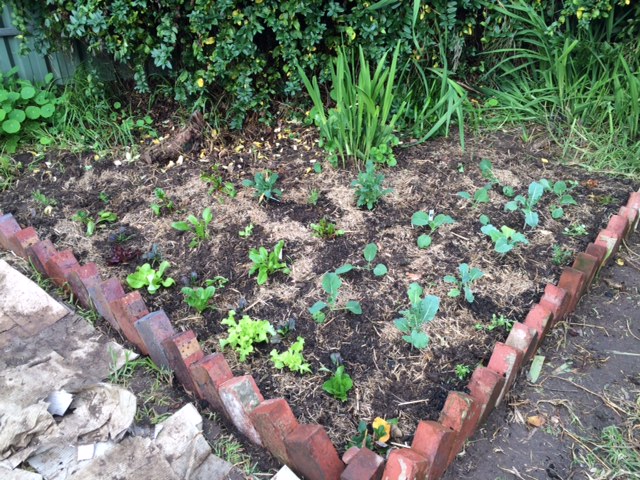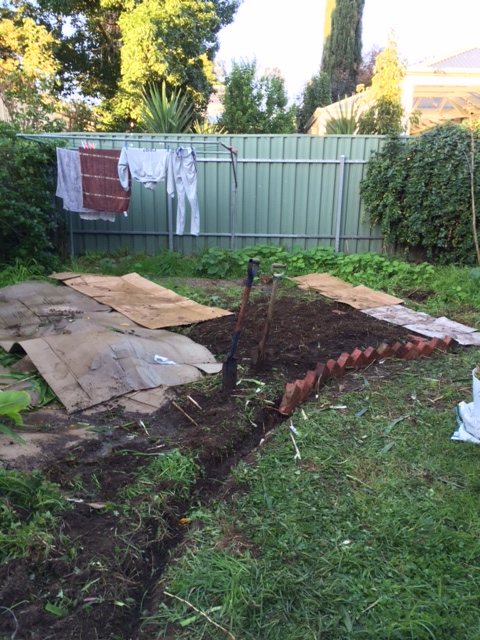Yup. I am still alive. Sorry about the neglect. Life has been busy. I’ve been juggling lots of projects and have lots of things to share…in the coming weeks. For now, a piece I wrote a few months back but haven’t published. As some of you know, I took on a role as Marketing Manager with Pip Magazine – a new Australian permaculture publication. Back in March it was our official launch at CERES in Melbourne. Here is my little write up:
—
The train twisted and turned through the heavily industrialised inner-west of Melbourne. The landscape grew taller and taller and the air became thicker with pollution. Shipping containers stacked six high, feedlots teaming with cattle destined for export to Asia, overhead wires everywhere; this is what population growth and affluence has brought us. The containers – destined to move stuff from one part of the globe to another. The pollution – a consequence of this activity. The overhead wires – keeping us connected, with electricity and telecommunications, for we are now so dispersed. The cattle – a proceed of a heavily globalised world and the developing east, raised on land that hasn’t Australia’s food sovereignty at heart.
I chose to travel from Adelaide to Melbourne by train in an attempt to enjoy a slower and smaller form of transportation. Yes, the journey is much longer than air travel. But I saw something in that. The journey gave me the opportunity to read and relax; to drop-out. Something, in the go-go-go world, that requires a bit of isolation to devote one’s self to completely. The journey also presented me with an opportunity for considered observation. Of people, of the countryside, of the industrialised grease-traps that our cities have become.
But there is hope, you know? A 20 minute tram trip from Melbourne CBD, on the banks of Merri Creek, sits the Centre for Education and Research in Environmental Strategies (CERES). CERES is a vision in permaculture. Formally a landfill site, CERES is now a lush and productive 4 hectares, demonstrating to the like-minded and curious alike, what a more sustainable world could look like. Large solar panel arrays and wind turbines, known as Energy Park, dominate the sky at the entrance. There’s a visitors and learning centre. A organic market that oozes the charm of a historic town square, selling in-season produce, some of which was grown in Honey Lane Market Garden, which it overlooks. There are private allotments for those that want to grow their own but mightn’t have the room at home. A village green that is used for talks and concerts. The brilliant CERES Organic Cafe, serving up beautiful food and really (really!) good coffee. And a myriad of buildings, built from natural materials and creative reusing what has already been produced. CERES really is the sort of place you could lose yourself for a day.
Last weekend CERES hosted its annual Harvest Festival their “biggest and best festival of the year: a little slice of country in the heart of the city”. It also marked the launch of our little contribution to permaculture, Pip Magazine. At 11am, Editor of Pip Magazine, Robyn Rosenfeldt took to the village green with co-originator of permaculture, David Holmgren, and author of The Holistic Life: Sustainability Through Permaculture, Ian Lillington. It’s been fourteen years since Australia had its own permaculture magazine, Permaculture International Journal, for which Lillington use to write, and Pip comes at the right time. A time when the world is in need of drastic change. Change that is starting in our little community. Holmgren is convinced that the grassroots is where the change needs to start. For a little push away from the status quo could have far-reaching and significant consequences as to how we head into the next century. Rosenfeldt emphasises the purpose of Pip: it’s a magazine produced by the community, for the community.
Harvest Festival saw breathtakingly diverse crowd of people converge on a small slice of Melbourne. Business people in suits, families with prams and whinging toddlers, hippies with tall heads of dreadlocks, hipsters sipping on green smoothies, people of countless nationalities; young people, old people, rich people, poor people. People. That’s what Harvest Festival is about. People. People and how they interact with the natural environment. Importantly, how people can interact with the natural environment but have the most positive, and littlest, impact upon it. The food was overwhelmingly simple and organic and healthy. The music, rich with meaning. The banter: of things that matter.
Harvest Festival was a really big deal for Pip Magazine. It was not only an opportunity to symbolise a launch, but an opportunity to meet the community who will be filling its pages over the years to come. Also, it was an opportunity to get some copies in the hot little hands of those that dropped by the stall. And for that, we are very grateful.
So, does permaculture and Pip have the ability to turn those wastelands I saw on the train trip in, into thriving utopias of diversity and abundance? Absolutely, let’s make that the goal.”





